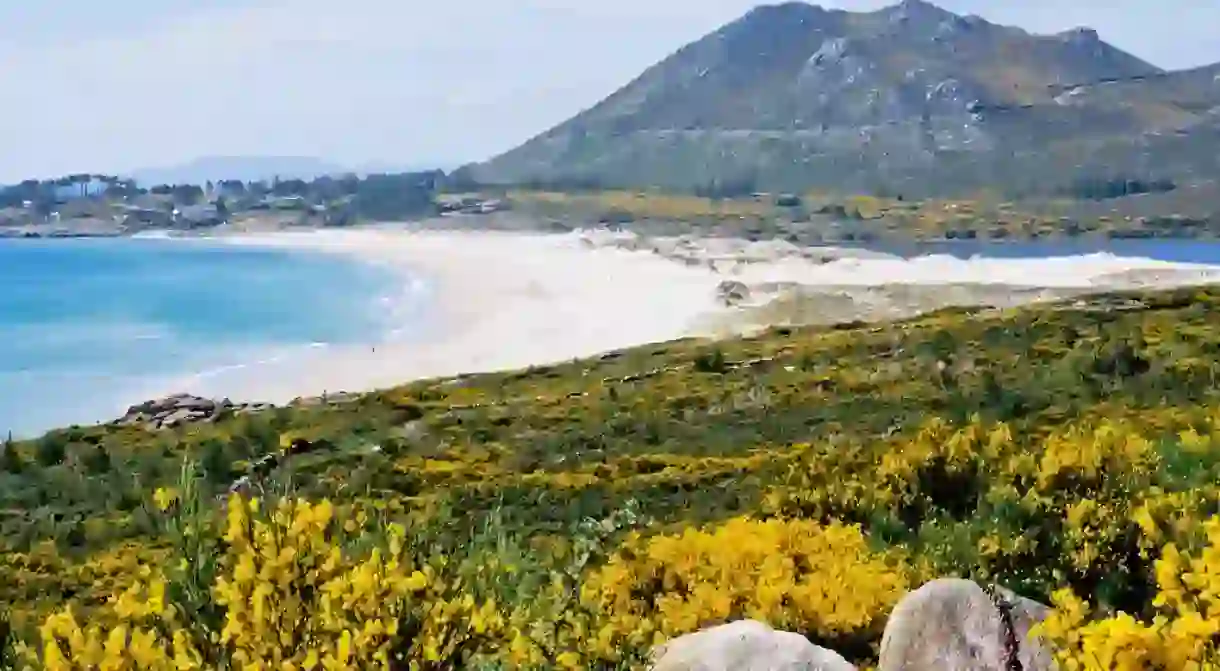10 Things to Know Before Visiting Galicia

The region of Galicia lies in the northwestern corner of Spain, above Portugal. It’s characterised by rugged coastlines, historic cities and rolling green scenery. Here are our 10 things to know before visiting Galicia.
They have their own language
Galicians speak Spanish, but they have their own language too – Gallego. Gallego is like a cross between Portuguese and Spanish, and you will see signs written in Gallego all over the region. To find out more about Gallego – read our article about it here.
It’s home to the end of the Camino de Santiago
Galicia is the end of the celebrated pilgrimage route, which crosses the whole of Spain and winds its way through Navarra, La Rioja, Castilla y Leon, and finally Galicia. The end point is of course the cathedral in the city of Santiago de Compostela.

They have a connection to Celtic culture
There is evidence to suggest that Galicians have somewhat of a connection to the Celts in Ireland and Scotland and the like, so don’t be surprised if you see instruments similar to bagpipes, whistles and souvenirs with Celtic crosses on them.
It’s a great place to learn to love seafood
Being surrounded on two sides by the Atlantic Ocean, Galicia has some of the best seafood in the whole of Spain. This means that it’s a great chance to try some new dishes and learn to love some of the more obscure sea creatures you may not have tried before. Pulpo, or octopus, is of course the most famous, but other things to try here include percebes, or goose barnacles, and angulas, or baby eels.

The weather is not always great here
Yes Galicia may be in Spain, but that doesn’t mean that you’re guaranteed hot and sunny weather. Galicia is known for its cool and rainy days, even in summer, so be prepared and bring a rain jacket and umbrella – as well as your bathing suit.
It’s home to beautiful wild beaches
Galicia may not be as popular for a beach holiday as Spain’s Costa del Sol, Costa Dorado or the Costa Brava, but it’s actually home to many spectacular beaches. One of the best beaches to visit is Praia das Catedrais, named ‘Cathedral’s Beach’ because of its towering rock formations.

A Coruña or Santiago de Compostela make for the best bases
The larger Galician cities of Santiago de Compostela in the centre and A Coruña in the northwest make for great bases to explore the rest of the region. Santiago de Compostela is the famous end of the Camino de Santiago pilgrimage route and is filled with historic architecture and fascinating museums, while Coruña lies on the coast, within reach of many of the area’s best beaches.
People once believed this was the end of the Earth
It was once believed that Galicia was where the Earth ended. This place was the westernmost point in the region, jutting out into the Atlantic Ocean. It was given the name Cape Finisterre – literally ‘end of the Earth’ – and is located on the Galician Costa da Morte, or the ‘Coast of Death’. Many people choose to continue the Camino de Santiago to this point.

It produces some excellent wines
Galicia is actually one of Spain’s best wine-producing regions, making some top quality white wines. The best areas to visit for wine here include the Rías Baixas, Ribeira Sacra, D.O. Monterrei and O Ribeiro. Read our article on ‘The Ultimate Tour of Galicia’s Best Wine Routes‘ to learn more.
It’s packed with vestiges of its Roman past
Galicia is an excellent destination for history lovers, especially those who are interested in the Romans. Some of the highlights include the UNESCO World Heritage Roman Walls of Lugo and the Roman bridge of Ourense and the Tower of Hercules in A Coruña.














